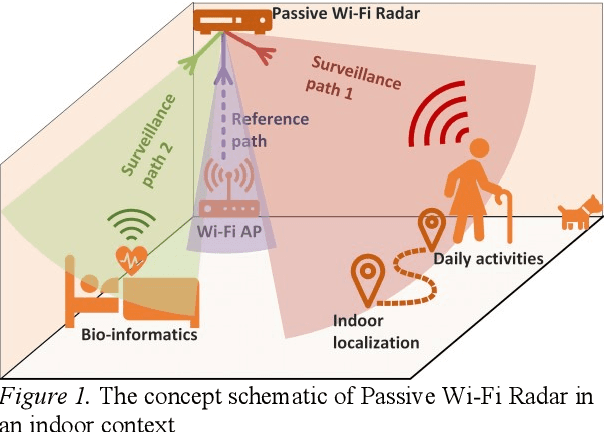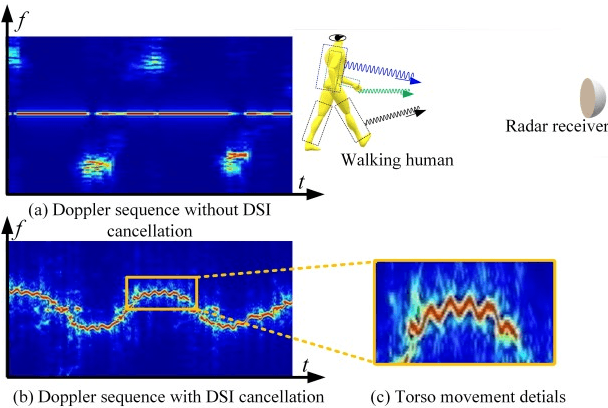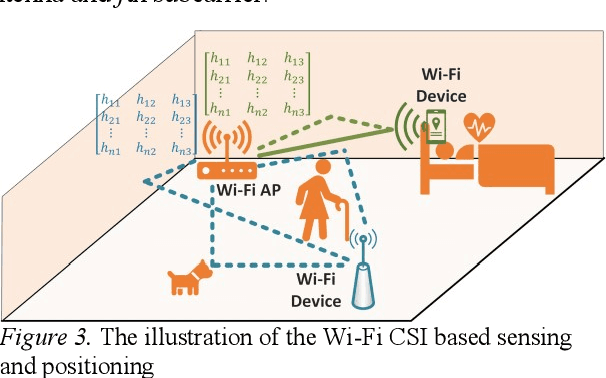Using Wi-Fi Signal as Sensing Medium: Passive Radar, Channel State Information and Followups
Paper and Code
Jan 09, 2022


The idea of exploiting the Wi-Fi bursts as the medium for sensing purposes, particularly for the human targets in the indoor environment, was cultivated in both radar and computer science communities and it has became a noticeable research genre with cross-disciplinary impact in security, healthcare, human-machine interaction etc.This article comparatively introduces passive radar based and channel state information (CSI) based approaches. For each means, the primary design principles, signal processing and representative applications scenarios are shown. At last, some opportunities and challenges of Wi-Fi sensing are pointed out for the sake of stepping closer to the practitioners and end-users.
* 4 pages, 3 figures
 Add to Chrome
Add to Chrome Add to Firefox
Add to Firefox Add to Edge
Add to Edge